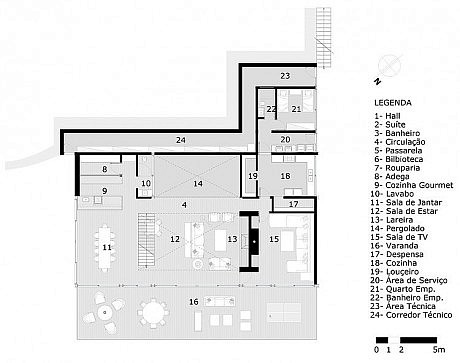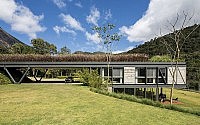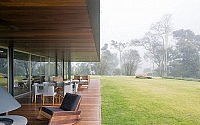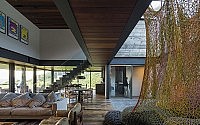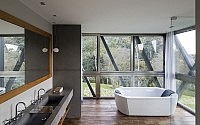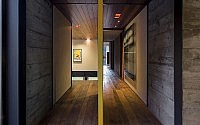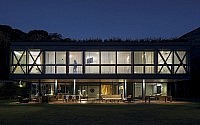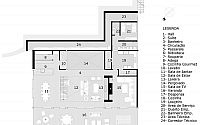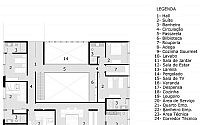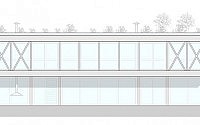JG Residence by MPG Arquitetura
Situated in Rio de Janeiro, Brazil, this inspiring private residence was designed by MPG Arquitetura.

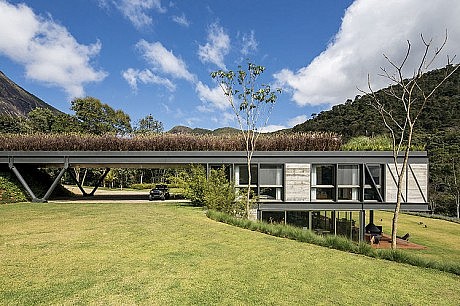
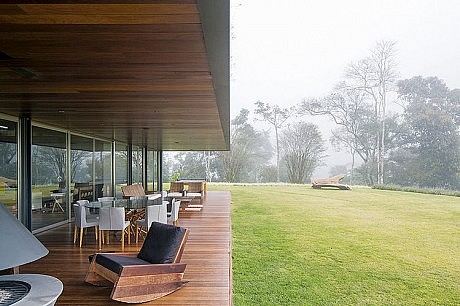
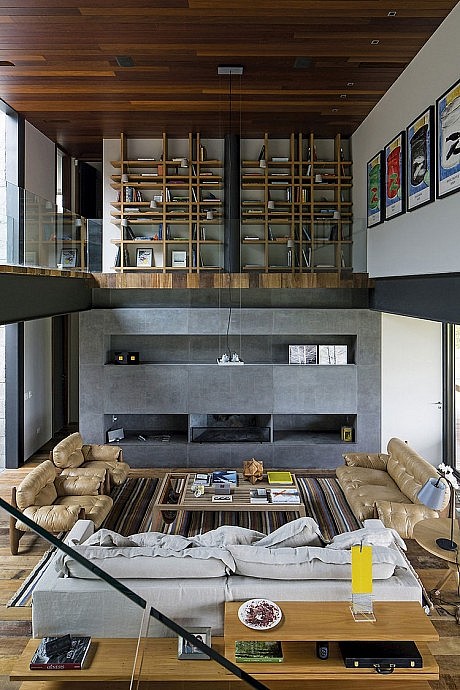
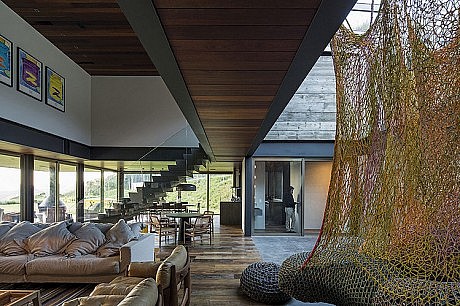
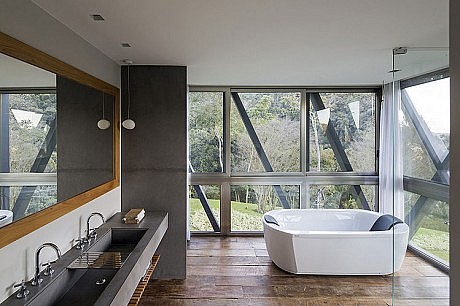

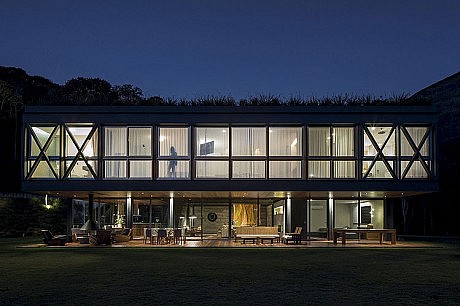
Description by MPG Arquitetura
The design of JG House started with the site itself. As you approach from above, our intention was to create a huge garden on top, in order to make the construction disappear on the landscape and make it work as a visual bridge connecting to the slopes of the valley that splits the land of 350.000 square meters (3,767,369 square feet).
A long green slab connects the roof to the slope behind. With 20 meters (65.5 feet) long, covers the entrance hall that is located on the upper floor, where all the bedrooms are.
The U shaped floor plan of that storey covers the veranda, dining room and home theatre. The central empty space, double ceiling, is where the living room and sculpture garden are located.
The main architectural concept was to create a veranda, also 20 meters (65.5 feet) long, without any pillars. The bedrooms on the upper floor are projected over that veranda, without any vertical support. The lack of pillars reinforce the idea of integration between the inside and the outside, connecting the living room, the veranda and then the garden itself.
The solution for that engineer query was the use of the Vierendeel truss. We used that kind of truss of rectangular openings on the frontal and lateral façades. That is the exterior structural skeleton of the house that permitted us to have the bedrooms on the upper floor over the veranda without any support. The Vierendeel truss results from the system that connects the lower and the upper steel beam with vertical slim pillars.
One of the highlights of this residence is the central living room and the sculpture garden at the bottom of the house, both with double ceiling and part of glass roofing bringing natural light to the interiors. Both sides of the upper floor are connected by a steel bridge crossing the double ceiling and splitting living room from the garden. On the sculpture garden we commissioned the Brazilian artist Ernesto Neto for a site specific art installation.
We chose for finishing, just natural materials, especially raw concrete on the walls, wood on the ceiling and flooring and natural stone on some details. We consider that natural materials age well, with dignity, interacts with the nature and as they get old, they evidence the acceptance of the architecture by the Nature.
In this project, in the interior design we just worked with the best Brazilian designers such as Sergio Rodrigues, Hugo França, Zanini de Zanine, Maria Candida Machado, Etel Carmona and Claudia Moreira Salles.
